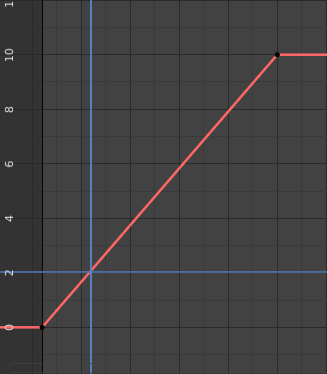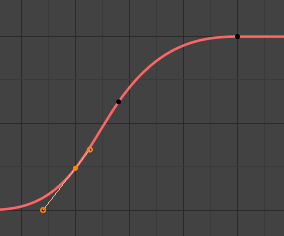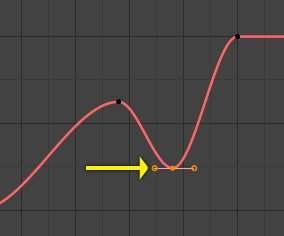简介#
Blender lets you animate almost any property, going from the X coordinate of an object to the transparency of a material. The evolution of a property's value over time is described by a function curve, or F-Curve for short.
An important aspect of F-Curves is that they can interpolate. This saves you the effort of manually configuring a value on every single frame, which would be highly impractical. Instead, you define just a few values on key frames, and let the curve calculate the values on all the other frames.

插值的示例。#
The example curve on the right has two such keyframes (indicated by black dots): one on frame 0 with value 0, and another on frame 25 with value 10. The curve automatically calculates the values for the other frames, such as for frame 5 where the value is 2.
时间的方向#
F-Curves are similar to Curve objects in that they interpolate between a set of user-defined control points. However, because their purpose is to define a single value on every frame, there's an important difference: F-curves can't be closed or otherwise made to turn back on themselves. They always continue going further to the right.
If you try to make a curve go left by dragging one control point past another, it switches the order of the points to prevent this.

